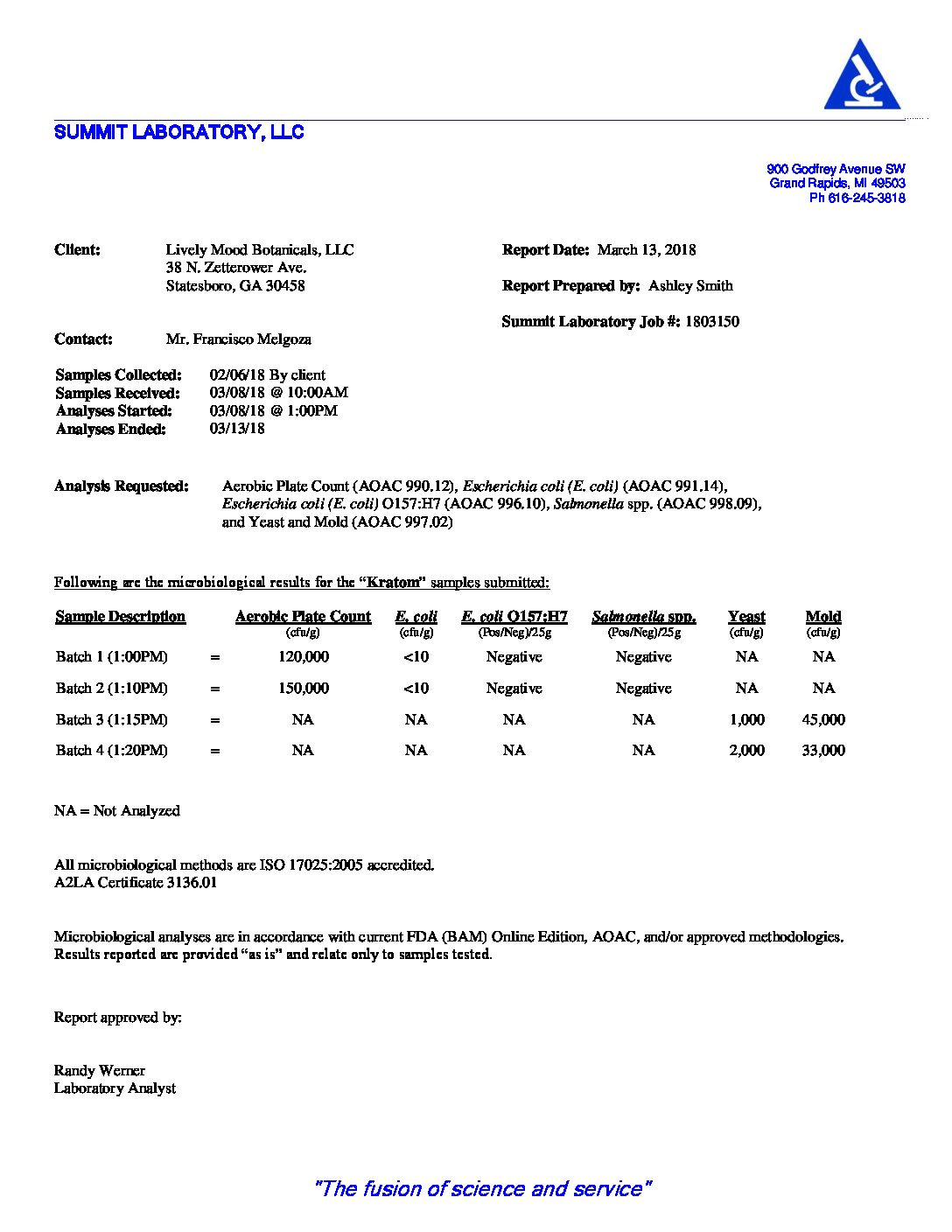
Kratom Lab Testing | Lively Mood
We have been looking into every single piece of Kratom literature we can find to compile a list of Kratom facts, and have learned a few new things. Our new lab test results are also available!
It’s a well-known fact that Kratom has upwards of 40 different alkaloids, but we weren’t aware that it had been used as ‘folk medicine’ for the treatment of diabetes in Malaysia and Thailand (per a 2011 review published by the International Journal of Pharmaceutical Sciences and Research).
Of course, the fact that an herb has been traditionally applied as ‘folk medicine’ does not mean it is a legitimate form of treatment, and we by no means are making any medical claims about Kratom. But, according to the International Food Research Journal (21(1): 165–172 (2014), Kratom does, in fact, display antioxidant and a-glucosidase inhibitory activities.
Various publications mentioned the potential for Mitragyna Speciosa and other plants of the Rubiaceae family as antimicrobial, antioxidant, and a-glucosidase inhibitory agents. Another interesting fact we came across is that there are a wide variety of Mitragyna plants, some of which grow in Africa and likewise have traditional uses on that continent.
The most exciting piece was published by Jane K. Babin, Ph.D., Esq., a patent attorney with a Ph.D. in molecular biology.
We would highly recommend reading her study.
In regards to our lab test results, four composite samples were gathered for analysis, and the results were just as expected.
Our Kratom is entirely free of E. Coli and Salmonella while falling well within guidelines for microbes, yeast, and mold as determined by the American Herbal Products Association.



